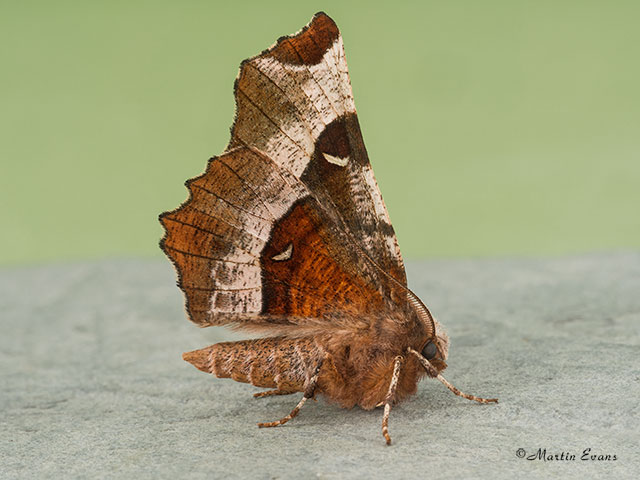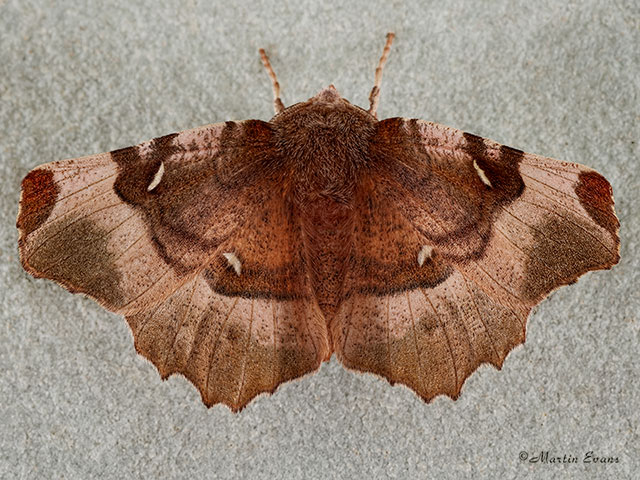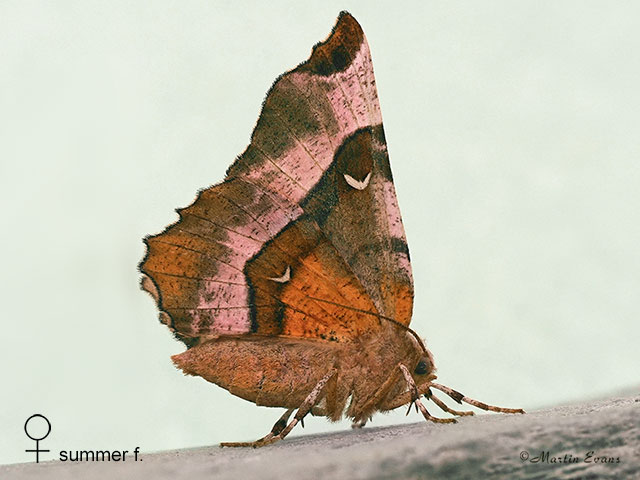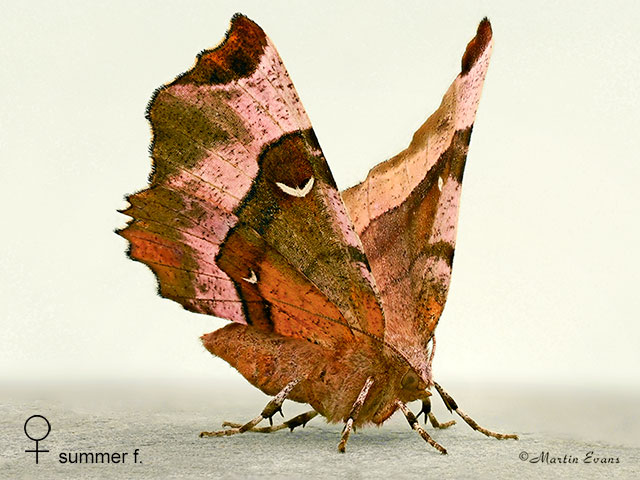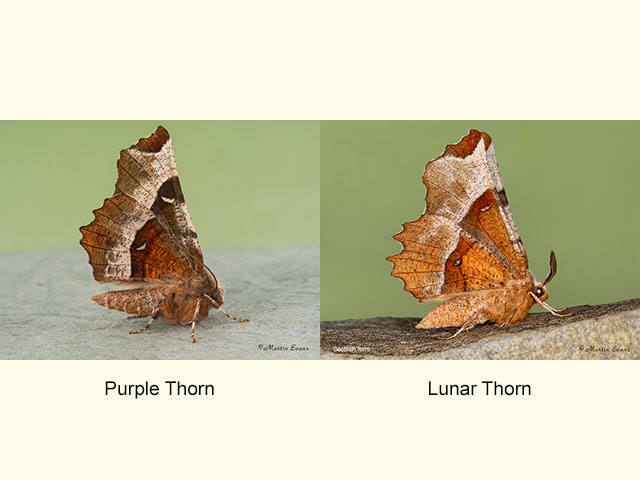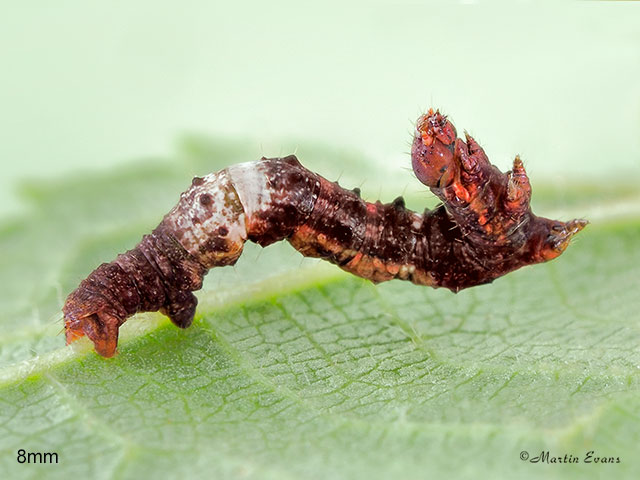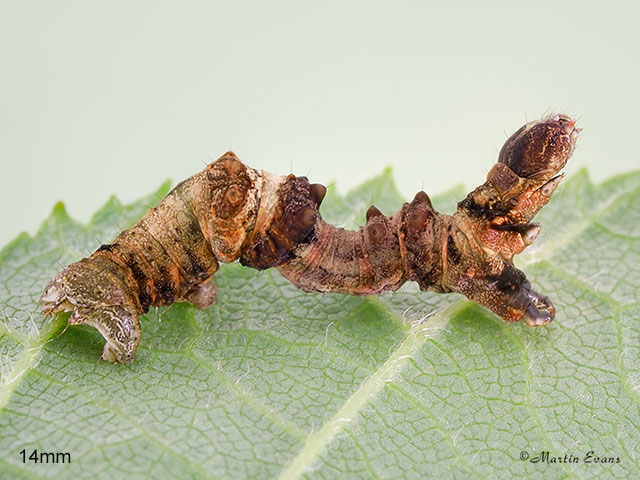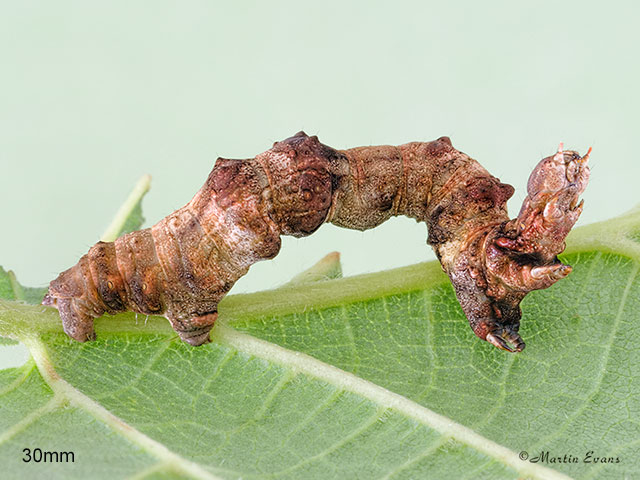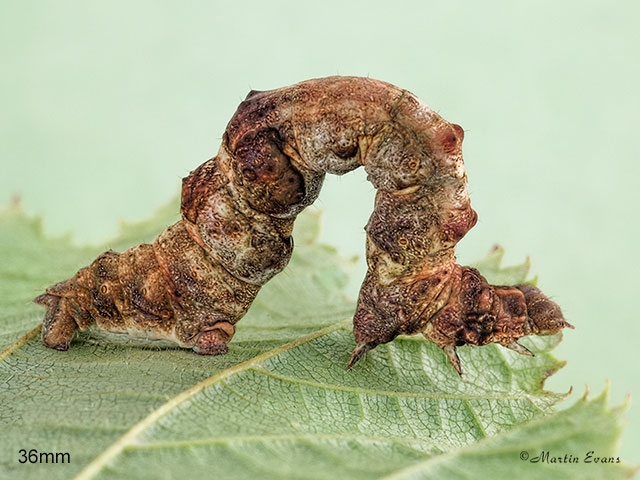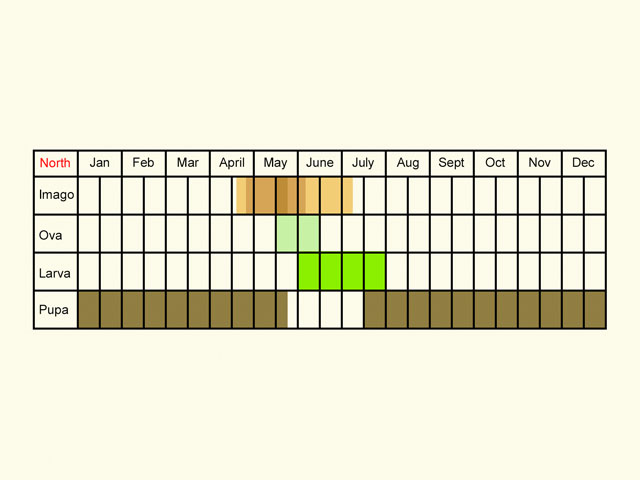Geometridae
70.239 Purple Thorn Selenia tetralunaria (Hufnagel, 1767)
Common
Similar species: The darker Scottish form of Lunar Thorn Selenia lunularia is darker than the southern moths and could be mistaken for Purple Thorn but has smaller central wing crescents.
Forewing: 17 to 23mm
Habitats: Deciduous woodland, scrub and gardens.
Habits: The moth comes to light.
Foodplant: The larva feeds on oaks, Blackthorn, Hawthorn, Ash, limes, Alder, Downy Birch, Silver Birch, Hazel and other deciduous trees. It pupates just below the soil surface.
